1920s
Dangers of the Charleston
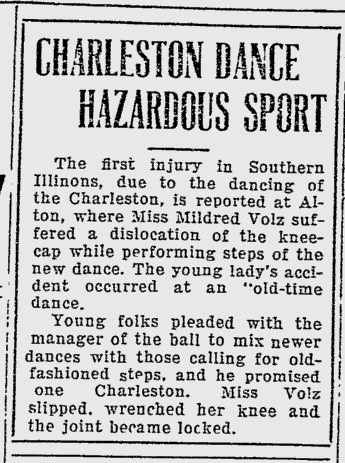
Source.
Posted By: Paul - Sun Nov 24, 2019 -
Comments (1)
Category: 1920s, Dance, Pain, Self-inflicted and Otherwise
A woman dressed only in her hair
San Francisco Examiner - Jun 26, 1927
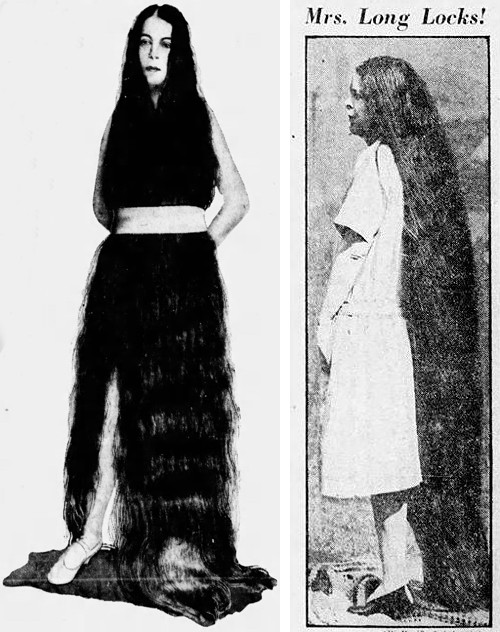
(left) In her birthday suit; (right) fully clothed
Below: Looking a bit like that girl from The Ring movie.
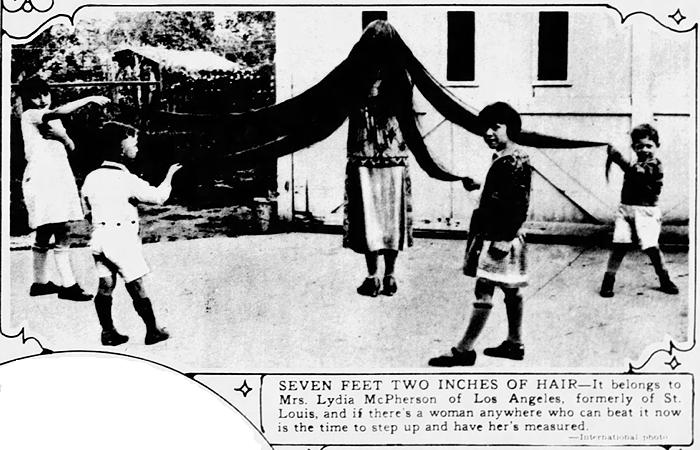
St. Louis Post Dispatch - Apr 24, 1927
The Ring girl, for comparison:
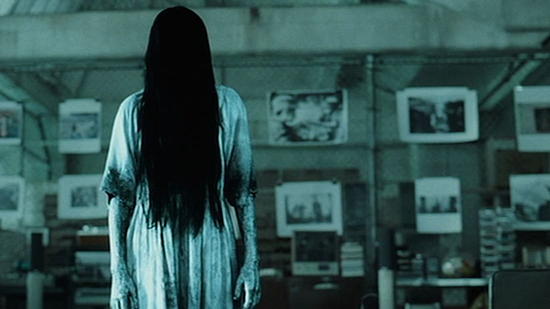
Some more images of Lydia McPherson and her long hair:

(left) at the 1933 Chicago Odditorium, where she was advertised as having "the longest red hair in the world" (via pbs.org); (right) undated photo (via sisterwolf).
Posted By: Alex - Fri Nov 15, 2019 -
Comments (0)
Category: 1920s, Hair and Hairstyling
Pabst-Ett Cheese
The ad copy claimed that it wasn't cheese. Instead, it was "more than cheese." So what exactly was this stuff?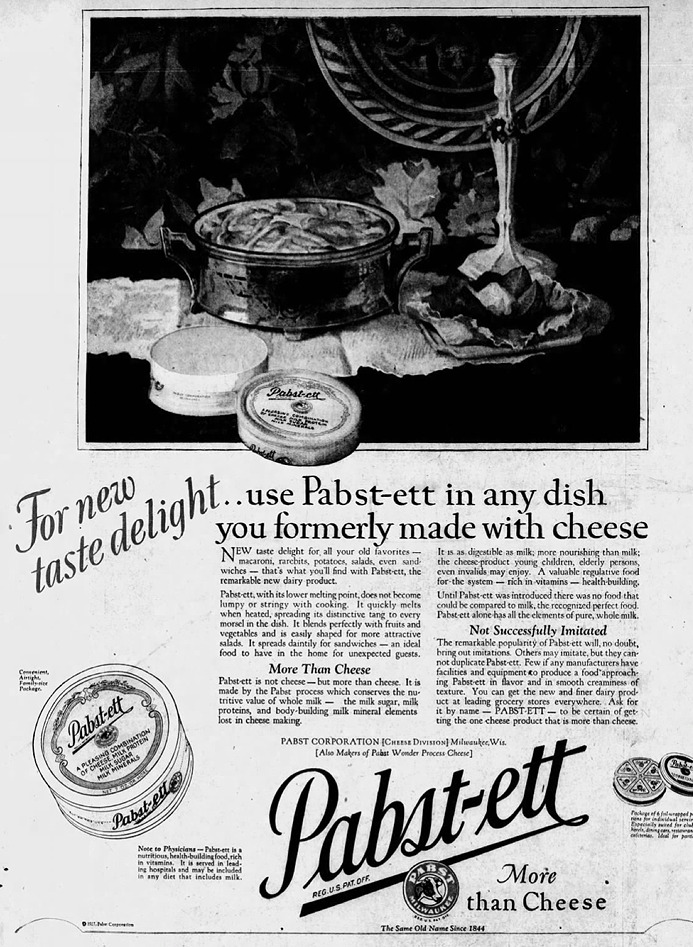
San Francisco Examiner - Aug 7, 1927
It is as digestible as milk; more nourishing than milk; the cheese-product young children, elderly persons, even invalids may enjoy. A valuable regulative food for the system — rich in vitamins — health-building.
The Vintage Recipe Blog explains that it was a "a processed whey cheese similar to Velveeta but more spreadable." The Pabst Brewing Company created it in the 1920s as a way to find an alternative line of business during Prohibition. When Prohibition ended, they sold the rights to Kraft, who discontinued the product a few years later.

Posted By: Alex - Wed Nov 06, 2019 -
Comments (4)
Category: Food, 1920s
Symphony with Airplane Propellers
American composer George Antheil scored his Ballet Mécanique (or Ballet for Machines) for sixteen player pianos, two conventionally played pianos, four brass drums, three xylophones, a tam-tam, seven electric bells, a siren, and three airplane propellers. Here's what happened during its first U.S. performance in 1927, according to Nicholas Tawa in The Great American Symphony:He was labeled a charlatan and was forced to retreat to Europe. All the while, the New York fiasco haunted him like a nightmare. His reputation remained in ruins.
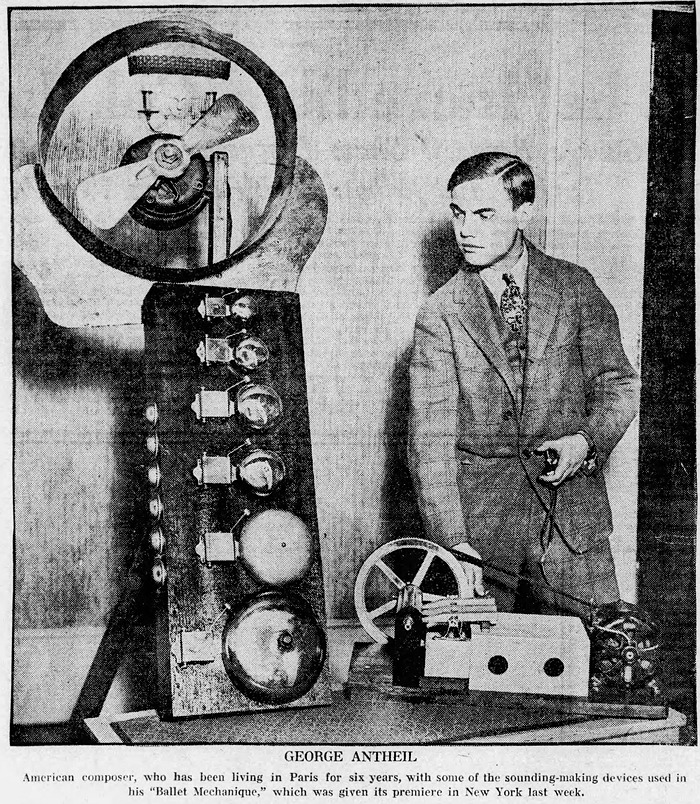
Baltimore Sun - Apr 17, 1927
While the inclusion of the airplane propellers provided a dramatic flourish, apparently it was the attempt to synchronize the player pianos that was the real technical challenge, and impossible with 1920's technology. In a 1999 Wired article, Paul Lehrman describes an effort to perform Ballet Mécanique with the help of computer technology.
While over at logosfoundation.org, one can find a description of a more recent project to perform Antheil's symphomy with full-scale propellers... because apparently previous performances, for safety reasons, never used full-sized propellers.
Thanks to Virtual in Carnate for alerting us to the existence of Antheil's propeller symphony.
Posted By: Alex - Mon Nov 04, 2019 -
Comments (3)
Category: Music, 1920s
William Greenwood, the Modern Noah
William Greenwood was a local character in Olympia, Washington. In the 1920s, he decided that a great flood was coming soon, so he built himself an ark. The press dubbed him the modern Noah.The exact date that he thought the flood would arrive changed frequently. First it was 1928, then 1932, then 1938, etc.


Eventually the city decided that his ark was a fire hazard, so in June 1942 they had the fire department burn it down. But Greenwood built another, smaller one. He lived on until 1958, dying at the age of 91. More info: Olympia History

San Bernardino County Sun - June 20, 1942

Mason City Globe-Gazette - Feb 13, 1948
Posted By: Alex - Sat Oct 26, 2019 -
Comments (4)
Category: Armageddon and Apocalypses, Eccentrics, Crackpots, 1920s
Flapper Dictionary
As defined by Wikipedia, "Flappers were a generation of young Western women in the 1920s who wore skirts, bobbed their hair, listened to jazz, and flaunted their disdain for what was then considered acceptable behavior. Flappers were seen as brash for wearing excessive makeup, drinking, smoking cigarettes, driving automobiles, treating sex in a casual manner, and otherwise flouting social and sexual norms."A "Flapper Dictionary" appeared in various newspapers and magazines in 1922. Selections below. Even more flapper terms can be found at Book Flaps and Click Americana.
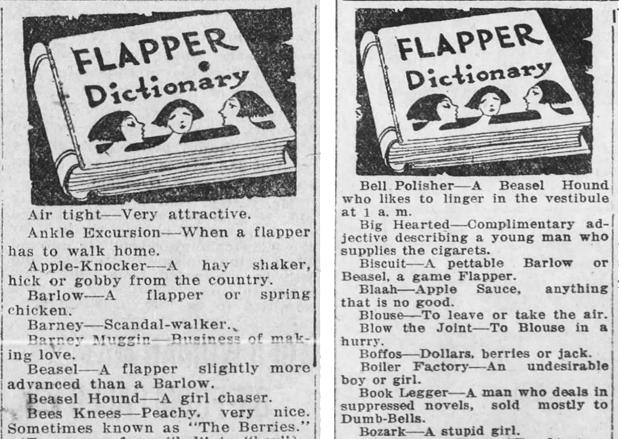
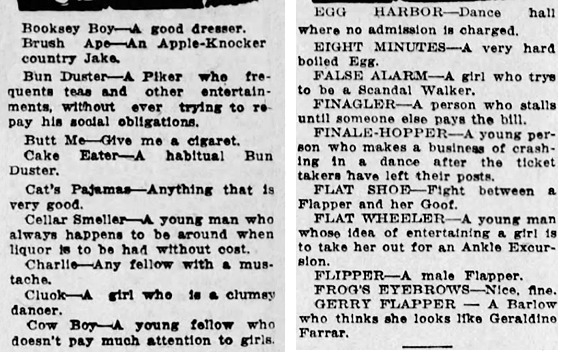
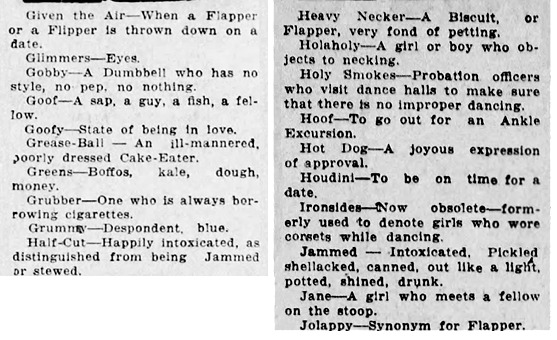
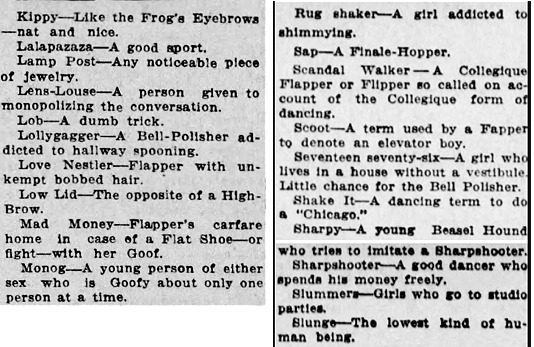
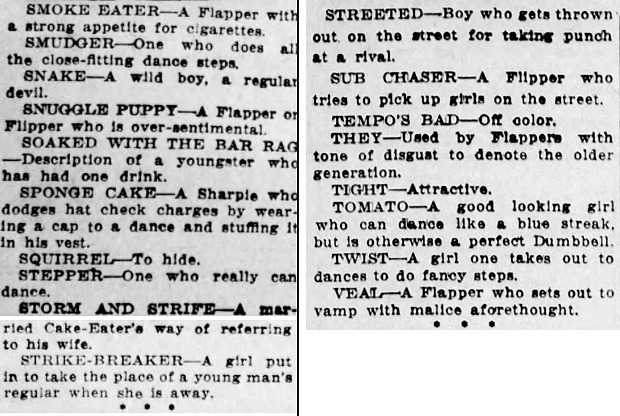
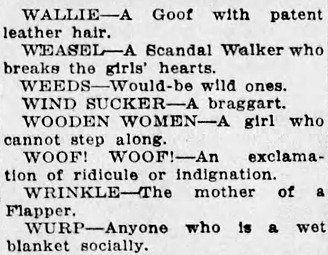
New Castle Herald - Apr 1922
Posted By: Alex - Tue Oct 08, 2019 -
Comments (4)
Category: Languages, Slang, Subcultures, 1920s
L’Orange Variee Perfume
From 1925. It came in small bottles designed to look like segments of an orange. Not many bottles of this stuff survive. When intact sets do come up at auction, they can easily fetch over $1000.More info: Box Vox

Posted By: Alex - Mon Jul 22, 2019 -
Comments (0)
Category: 1920s, Perfume and Cologne and Other Scents
Artwork Khrushchev Probably Would Not Have Liked 22
The avant garde that irked Khrushchev flourished in Japan also, as we learn in this article.
Posted By: Paul - Wed Jun 26, 2019 -
Comments (0)
Category: Annoying Things, Art, Avant Garde, 1920s, Asia, Russia
Mystery gadget 76
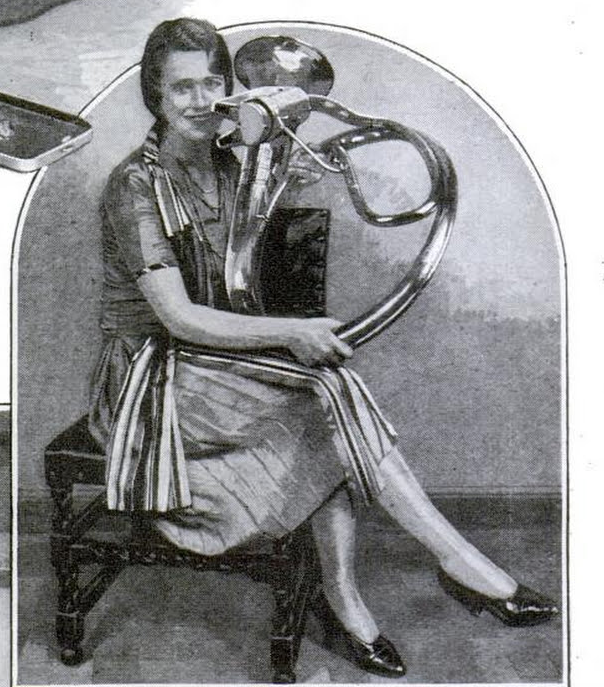
What is the name of this musical instrument?
Answer is here.
Or after the jump.
More in extended >>
Posted By: Paul - Thu May 30, 2019 -
Comments (4)
Category: Music, 1920s
Mystery Gadget 75
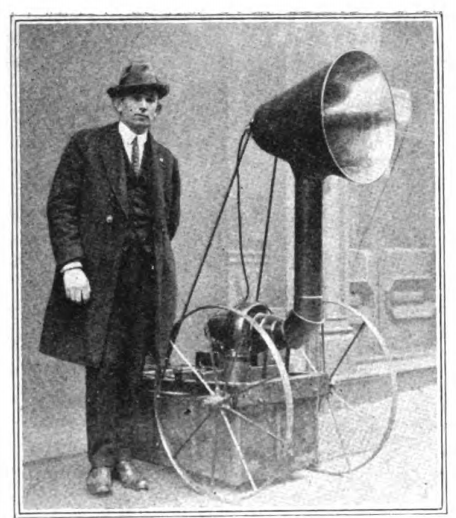
What's it for?
The answer is here.
And after the jump.
More in extended >>
Posted By: Paul - Tue May 21, 2019 -
Comments (5)
Category: Technology, 1920s

| Who We Are |
|---|
| Alex Boese Alex is the creator and curator of the Museum of Hoaxes. He's also the author of various weird, non-fiction, science-themed books such as Elephants on Acid and Psychedelic Apes. Paul Di Filippo Paul has been paid to put weird ideas into fictional form for over thirty years, in his career as a noted science fiction writer. He has recently begun blogging on many curious topics with three fellow writers at The Inferior 4+1. Contact Us |




